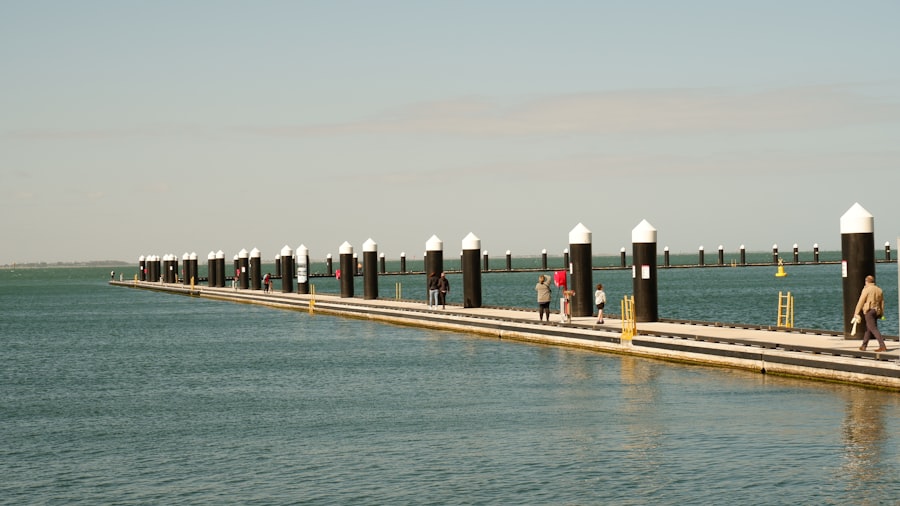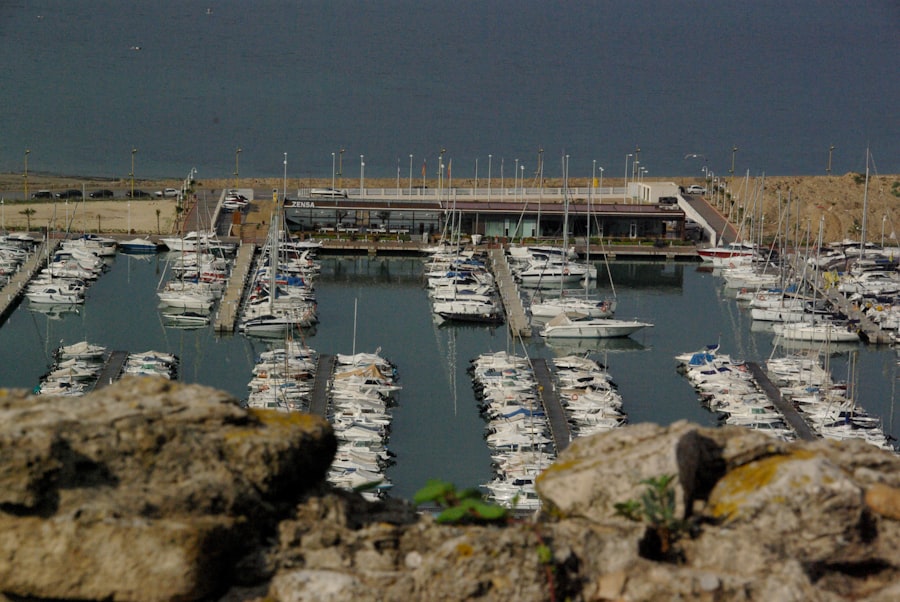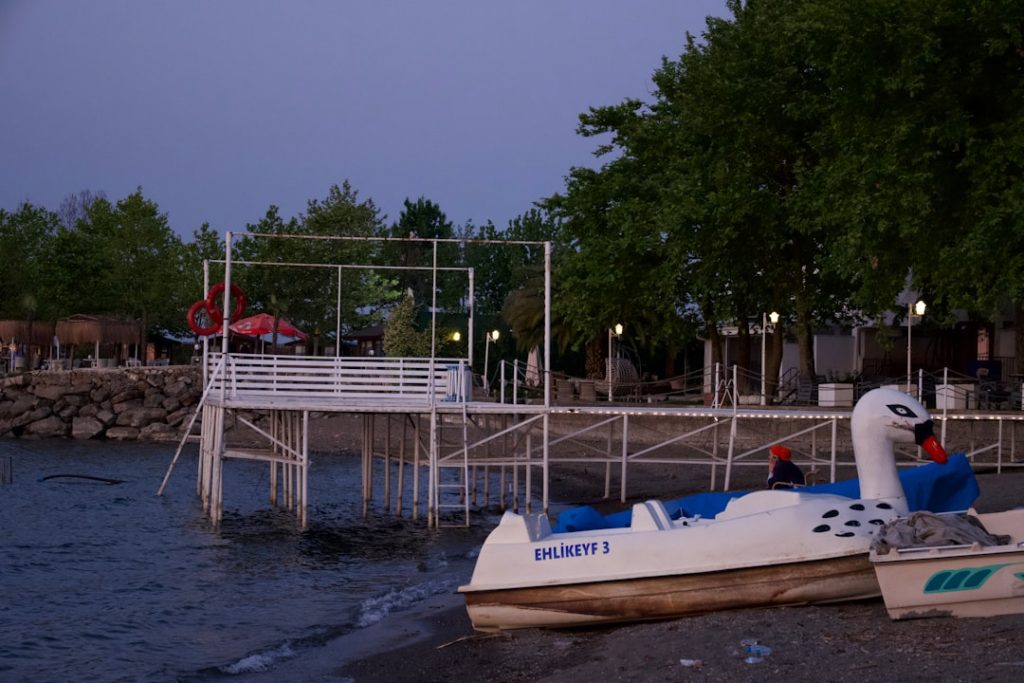Pontoons are a unique type of watercraft that have gained immense popularity among boating enthusiasts for their stability, spaciousness, and versatility. Unlike traditional boats, which often have a single hull, pontoons are characterized by their two or more buoyant tubes, or pontoons, that provide excellent buoyancy and stability on the water. This design allows for a larger deck area, making them ideal for family outings, fishing trips, or leisurely cruises.
Before diving into the world of pontoons, it’s essential to understand their fundamental characteristics and how they differ from other types of boats. When considering a pontoon purchase, potential buyers should familiarize themselves with the various sizes and configurations available. Pontoons can range from small, compact models suitable for a few passengers to larger vessels designed to accommodate larger groups.
Additionally, the materials used in construction can vary significantly, with aluminum being a popular choice due to its lightweight and corrosion-resistant properties. Understanding these aspects will help buyers make informed decisions that align with their specific needs and preferences.
Key Takeaways
- Understand the basics of pontoons to make an informed purchase decision.
- Explore different types of pontoons to find one that suits your needs.
- Consider key factors like size, capacity, and intended use when choosing a pontoon.
- Customize your pontoon with features and add-ons to enhance your boating experience.
- Learn about financing options and maintenance tips to keep your pontoon in excellent condition.
Types of Pontoons: Exploring Your Options
The market offers a diverse array of pontoon types, each tailored to different activities and preferences. One of the most common types is the leisure pontoon, designed primarily for relaxation and socializing. These models often feature spacious decks, comfortable seating arrangements, and amenities such as built-in coolers and sound systems.
They are perfect for family outings or gatherings with friends, providing ample space for sunbathing or enjoying a picnic on the water. For those who are more inclined towards fishing, fishing pontoons are specifically designed with anglers in mind. These boats typically come equipped with features such as rod holders, live wells for storing bait, and specialized seating arrangements that enhance the fishing experience.
Some models even include fish finders and trolling motors to make the pursuit of fish more efficient. Additionally, there are performance pontoons that prioritize speed and agility, often featuring powerful engines and sleek designs that allow for thrilling rides across the water.
Factors to Consider When Choosing a Pontoon

Selecting the right pontoon involves careful consideration of several key factors. First and foremost is the intended use of the boat. Buyers should reflect on how they plan to use their pontoon—whether for leisurely cruising, fishing, or hosting parties—since this will significantly influence the type of model they should choose.
For instance, a family looking to entertain guests may prioritize spaciousness and comfort, while avid anglers might focus on functionality and storage for fishing gear. Another critical factor is the size of the pontoon. The length and width of the boat will determine its capacity and stability on the water.
Larger pontoons can accommodate more passengers but may be more challenging to maneuver and dock. Additionally, potential buyers should consider their storage options when selecting a size; some homeowners may have limited space for parking or storing a larger vessel. Furthermore, prospective owners should also evaluate their towing vehicle’s capacity to ensure it can safely transport the pontoon to various locations.
Customizing Your Pontoon: Features and Add-ons to Consider
| Feature/Add-on | Description | Benefits | Considerations |
|---|---|---|---|
| Upgraded Seating | High-quality, comfortable seats with weather-resistant materials | Enhanced comfort for long trips, improved aesthetics | Cost, space availability, maintenance |
| Sound System | Marine-grade speakers and stereo system | Improved entertainment, better sound quality | Power consumption, installation complexity |
| Bimini Top | Retractable canopy for shade and protection from sun | Comfort in sunny weather, UV protection | Durability, ease of use, storage when not in use |
| Fishing Package | Rod holders, live wells, tackle storage | Convenience for anglers, organized gear storage | Space allocation, added weight |
| LED Lighting | Underwater and deck lighting options | Improved visibility, aesthetic appeal | Power usage, installation cost |
| Table and Dining Setup | Removable or fixed tables for meals and socializing | Enhanced social experience, convenience | Space usage, stability during movement |
| Storage Solutions | Additional compartments and lockers | Better organization, clutter reduction | Weight distribution, accessibility |
| Upgraded Flooring | Non-slip, durable flooring materials | Safety, easier cleaning | Cost, installation time |
Customization is one of the most appealing aspects of owning a pontoon. Many manufacturers offer a range of features and add-ons that allow buyers to tailor their boats to their specific needs and preferences. One popular customization option is seating arrangements; buyers can choose from various styles, including lounge chairs, swivel seats, or even recliners, depending on how they envision using their pontoon.
Additionally, some models offer modular seating that can be rearranged or removed entirely for added flexibility. Beyond seating, there are numerous other features that can enhance the pontoon experience. For example, adding a bimini top provides shade on sunny days, while a full enclosure can protect passengers from inclement weather.
Buyers may also consider upgrading their sound systems for an enhanced audio experience while cruising. Other popular add-ons include swim ladders for easy access to the water, LED lighting for nighttime outings, and even kitchenettes or grills for cooking onboard. These customizations not only improve comfort but also elevate the overall boating experience.
Where to Find Pontoons for Sale: Tips for Shopping
When it comes to purchasing a pontoon, prospective buyers have several avenues to explore. One of the most straightforward options is visiting local dealerships that specialize in boats and watercraft. These dealerships often have a variety of models on display, allowing buyers to see and test them in person before making a decision.
Additionally, knowledgeable sales staff can provide valuable insights into different models and help buyers navigate their options based on their needs. Online marketplaces have also become increasingly popular for buying pontoons. Websites dedicated to boat sales often feature extensive listings from both dealers and private sellers.
Buyers can filter their searches based on criteria such as price range, size, and location, making it easier to find a suitable option. However, when shopping online, it’s crucial to conduct thorough research on the seller’s reputation and ensure that any potential purchase is accompanied by proper documentation and warranties.
Financing Your Pontoon Purchase: Options and Considerations

Financing a pontoon purchase is an important consideration for many buyers, as these vessels can represent a significant investment. Several financing options are available, including traditional bank loans, credit unions, and specialized marine lenders that focus specifically on boat financing. Each option comes with its own set of terms and interest rates, so it’s essential for buyers to shop around and compare offers before committing.
In addition to traditional financing methods, some dealerships may offer in-house financing options that can simplify the purchasing process. These arrangements often come with flexible payment plans tailored to fit individual budgets. However, buyers should carefully review the terms of any financing agreement to ensure they understand the total cost of ownership over time.
It’s also wise to consider additional costs associated with owning a pontoon—such as insurance, maintenance, and storage—when determining an affordable budget.
Maintenance and Care for Your Pontoon: Tips for Keeping Your Watercraft in Top Shape
Proper maintenance is crucial for ensuring the longevity and performance of a pontoon. Regular cleaning is one of the simplest yet most effective ways to keep a pontoon in top shape. After each outing, it’s advisable to rinse off any saltwater or debris that may have accumulated on the hull and deck.
Using mild soap and a soft brush can help prevent buildup that could lead to corrosion or damage over time. In addition to cleaning, routine inspections are essential for identifying potential issues before they escalate into costly repairs. Owners should regularly check the pontoons for signs of leaks or damage, inspect the engine and fuel system for any irregularities, and ensure that all safety equipment is in good working order.
Seasonal maintenance tasks may include winterizing the engine if the boat will be stored during colder months or checking the battery’s condition before launching in spring.
Getting Ready to Hit the Water: Preparing for Your Pontoon Adventure
Before embarking on a pontoon adventure, preparation is key to ensuring a safe and enjoyable experience on the water. First and foremost, it’s essential to check local regulations regarding boating safety equipment requirements. Most jurisdictions mandate certain items such as life jackets for all passengers, fire extinguishers, and sound signaling devices like whistles or horns.
Additionally, planning ahead can enhance the overall experience. This includes mapping out potential destinations or routes on the waterway and considering factors such as weather conditions and tides. Packing essentials like food, drinks, sunscreen, and first aid supplies will ensure that everyone aboard is comfortable throughout the outing.
Finally, conducting a pre-launch checklist—confirming that all equipment is functioning properly and that safety gear is readily accessible—will help set the stage for an enjoyable day on the water with family and friends.


